
The Art of Non-Alcoholic Spirits
blog
For decades, spirits and cocktails have fostered a culture of craft, connection, and celebration. But over time, cocktail culture has evolved far beyond the buzz!
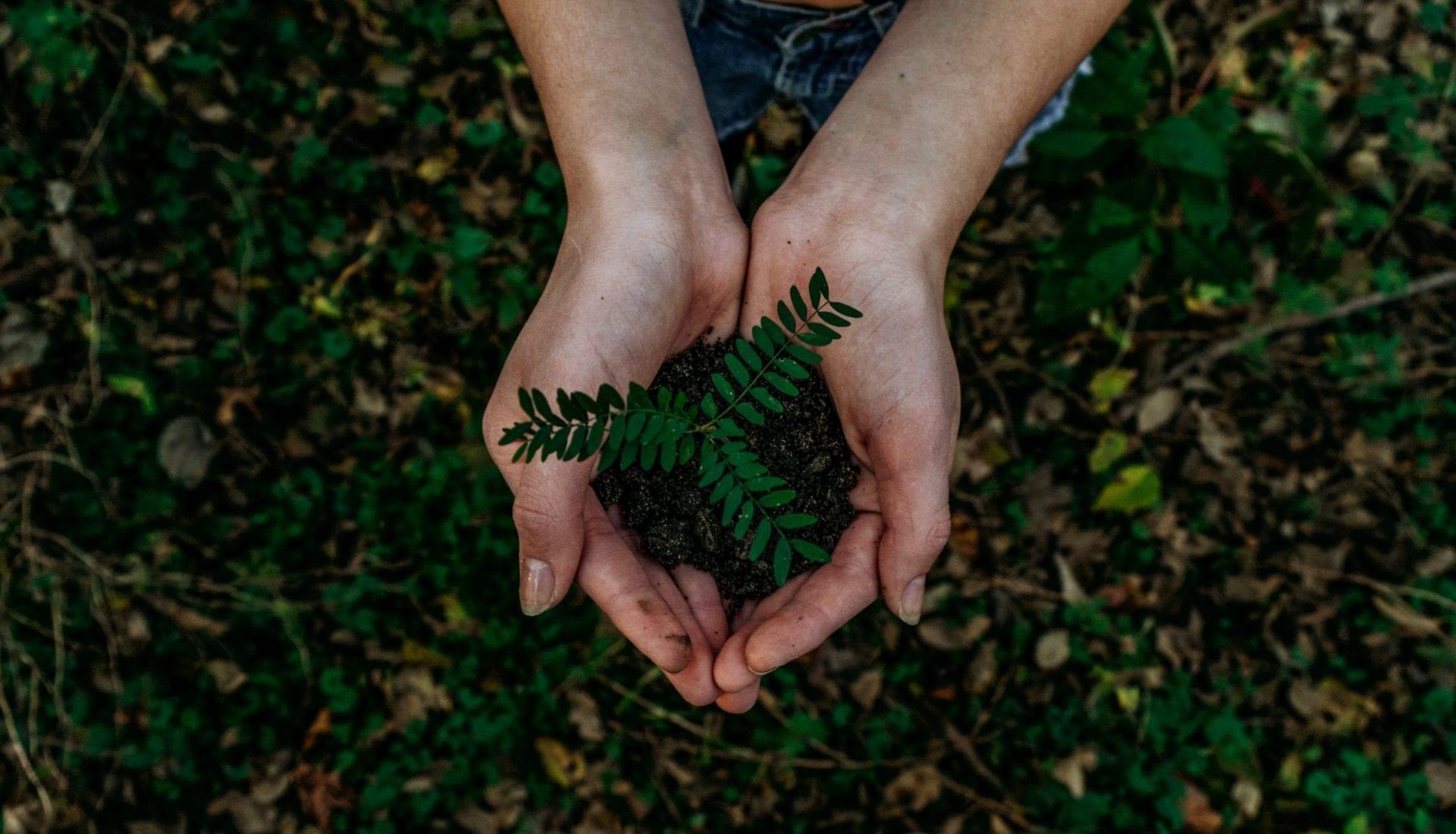
Written by Jorge Nieri, Brand Realization Consultant, By QUEST, LLC.
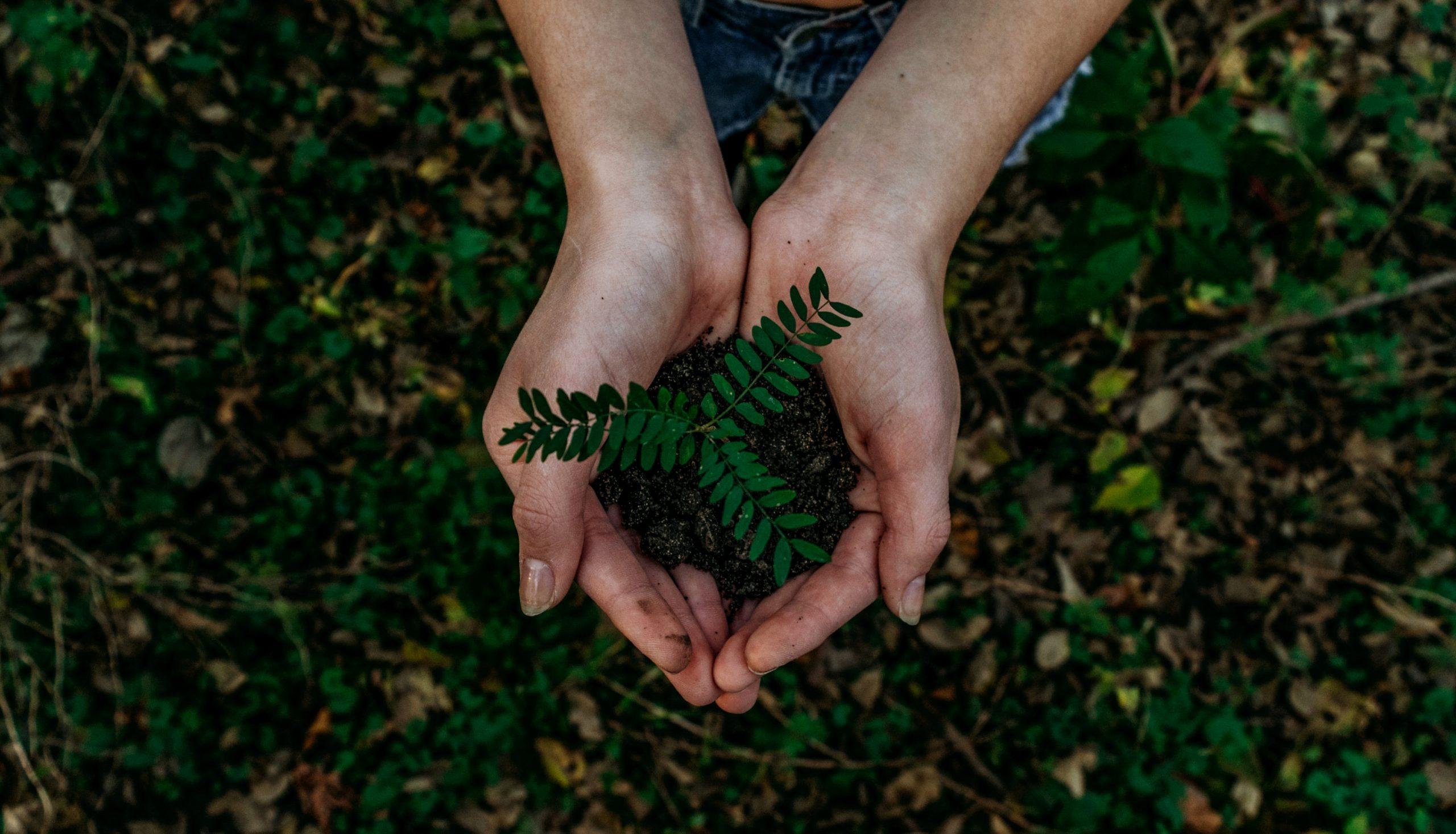
The craft spirits movement was born in part out of the need for authentic self-expression - sometimes recalling the past, but always creating new, one-of-a-kind quality alcoholic elixirs and libations. Craft spirits embodies authenticity, quality, community and, more and more often, sustainability.
Trends in the packaging world parallel these as well; but sustainable packaging goes beyond simply using recyclable materials. You have to take the steps to educate yourself on what goes into your packaging, what the consequences may be for that choice, and what happens to your bottle long after your delicious spirit has gone.
As a craft distiller, you can choose sustainable packaging and decoration that doesn't harm people or the environment - and it doesn't have to cost you an arm and a leg! Here's four simple changes you can implement to make your packaging more eco-friendly.

Do you remember Chemistry lab in high school? The rubber gloves? The fume hood? The eye bath?
Hydrochloric and hydrofluoric acids are involved in archaic methods to achieve frosted or etched finishes on glass. They're also incredibly dangerous. At room temperature, this acid becomes a gas that can permeate your skin and liquify your bones. Needless to say, it's not great for the environment either.
While the US Environmental Protection Agency (EPA) no longer allows the construction of domestic facilities using these harmful acids, this practice remains in countries like Mexico and China. That means that craft distillers purchasing packaging from other countries may be unintentionally contributing to this issue.
At QUEST, a leading provider of specialty glass packaging and decoration, we offer more sustainable options. Not only is our Q-Frost® decoration technique pleasing to the eye, but it can be tinted to a variety of colors. Using Q-Frost®, we can achieve the look and texture of acid-etched without the ecological sacrifice and with superior performance, eliminating issues like scuffing, chipping, and scratching.
Another bonus is that unlike acid techniques which require a heavier bottle and additional fuel waste for transportation, our Q-Frost® coating option is perfect for eco-friendlier, light-weight bottle applications.
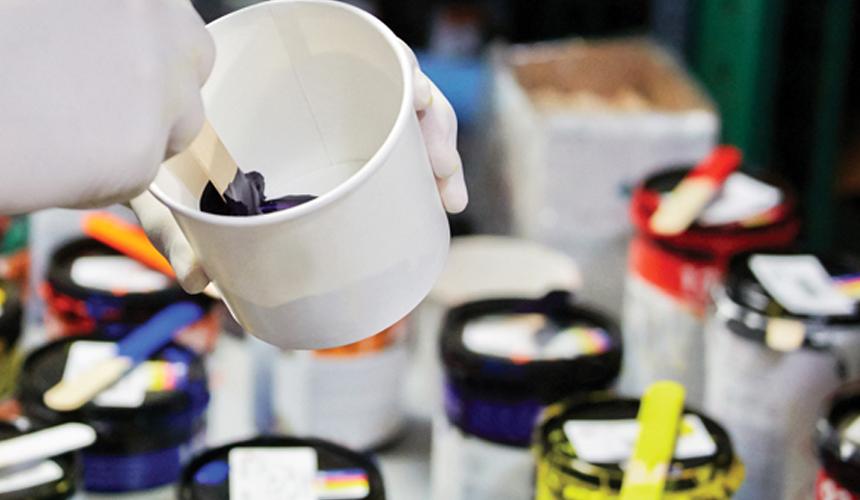
Heavy metal inks include many harmful substances, like lead, cadmium, and mercury (to create fiery oranges and reds); and chromium (for a silvery metallic look). Historically, our industry used these to achieve bright colors in bottle decorating before we recognized an obligation to be good stewards of the environment.
You should always ask your packaging partner if they use any of these chemicals in their facility or decoration, because unfortunately, many still do. Some bottle makers and decorators continue to use these compounds to provide vivid colors in a single pass. But is it really worth the cost of inflicting lasting environmental and personal harm?
Heavy metals can have serious consequences for your health. Lead attacks the brain and central nervous system. Antimony harms the eyes, skin, and lungs. Arsenic causes skin lesions and cancer, while cadmium damages the cardiovascular, renal, gastrointestinal, neurological, reproductive, and respiratory systems. And if that's not enough, mercury and chromium are disastrous for your nervous, digestive, and immune systems, especially damaging to the skin, eyes, lungs, liver, and kidneys.
What if I told you that QUEST could help you make your bottle look great without the added risks of heavy metals? We don't use any heavy metals in our work, yet our finishes, colors, and textures are vivid and safe; they're 100% in compliance. At QUEST, we have taken a social responsibility to not use any heavy metals in our decorating.
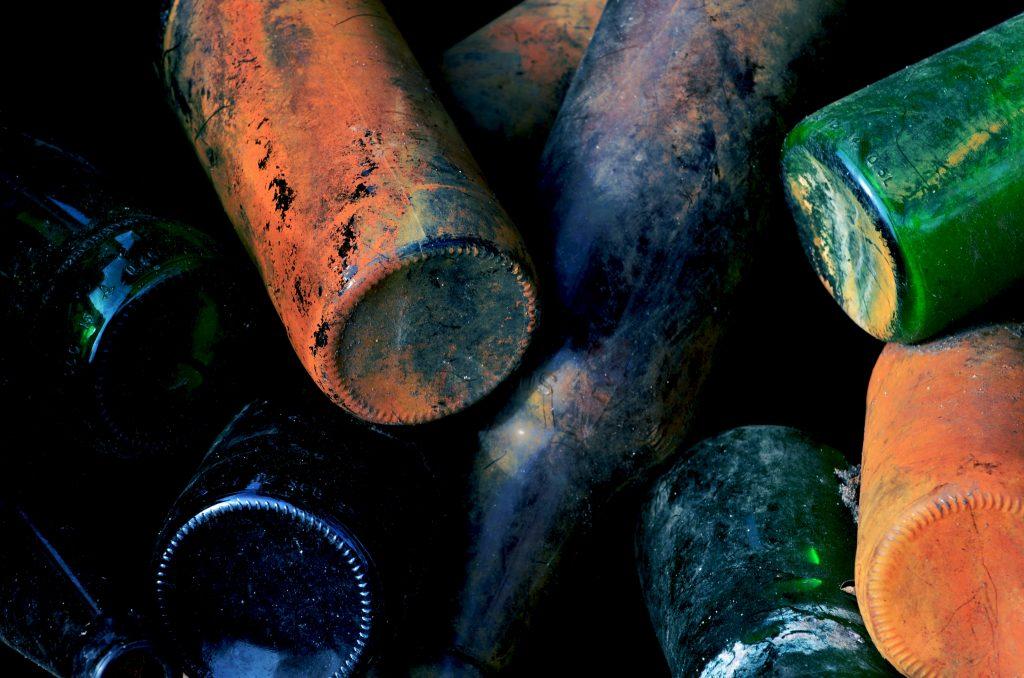
Glass is one of mother nature's most renewable resources. Made from sand (i.e. silica), used or broken glass can be recycled to make new glassware. But not all glassware is made equal.
Super flint glass, although popular for its extreme clarity and blemish-free appearance, comes at a cost to the environment. It can only be achieved by using pre-screened and highly processed virgin sand. That means more energy is needed to melt down the materials to the desired level of quality.
Compared to creating new glassware from raw materials for the first time, recycling glass by melting cullet (crushed glass) is a much more eco-friendly process. Recycling glass not only prevents it from building up in landfills, but it also helps reduce related air and water pollution by 20% and 50%, respectively. In other words, it allows yesterday's glass bottle to live once again - a small change that can make a big impact.
QUEST encourages clients to use recycled glass whenever possible. The quality of which has improved greatly in the last few years. In fact, we see it as an opportunity for craft distillers to take the lead on embracing recycled glass. Not only is it the more sustainable option, but it can even enhance the authenticity of your brand's story and identity by demonstrating your commitment to making the world a better place.
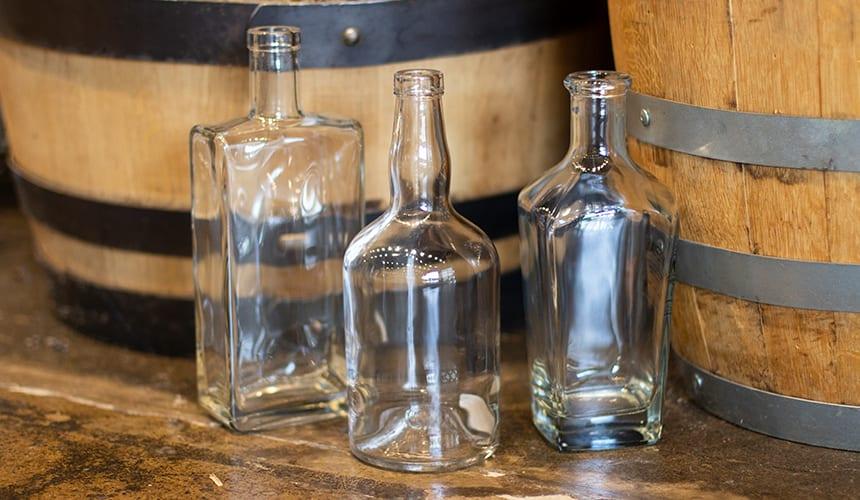
In the 1800s most spirits came in lightweight bottles - thin walls, thin bottoms. Sometime in the last century, the industry began a love affair with heavier bottles which can offer a sense of luxury and premium positioning - but QUEST believes this trend will soon be overtaken by a growing movement towards environmentally conscious, sustainable options.
The truth is that larger, heavier bottles consume more energy and raw materials. Throughout the supply chain, heavy bottles also require more diesel fuel to move them from the glass factory to the bottle decorator and filling line before finally ending up in the hands of distributors and retailers. That's why QUEST is a proponent for lighter weight bottles, which we can deliver without sacrificing the unique profiles and personalities that fit your brand. A lighter weight bottle is an easy contribution you can make toward upholding a more sustainable product and brand.
After all, it's thanks to passionate distillers like you that the craft movement was born and lives with great mind, spirit, and positive energy. Use these tips to ensure that your packaging holds those values high, as well.
To learn more about how QUEST can help you make more affordable and sustainable choices in packaging and decoration, visit byquest.com. You can also visit us at the Craft Beverage Expo booth #301 in Louisville, KY, this December 3-5 where we'll be showcasing our newest collection of distinctive, sustainable, and affordable bottles specially catered to the craft distiller.
Written by Jorge Nieri, Brand Realization Consultant, By QUEST, LLC.
Related Content
Picking the Right Packaging for Your Spirits Brand in 6 Easy Steps
Building Distributor Confidence Through Branding
What Spirits Producers Can Learn From The Bottled Water Industry

blog
For decades, spirits and cocktails have fostered a culture of craft, connection, and celebration. But over time, cocktail culture has evolved far beyond the buzz!

blog
Those that are familiar with the process of crafting distilled spirits may also be familiar with the 10 common congeners that are created during fermentation, and honed during the distillation run. Each congener has its own distinct personality, rendering unique tastes and aromas to the finished spirit.

blog
So, you want to start distilling with freshly milled grain. Maybe you're tired of paying top dollar for the pre-milled stuff from the malt distributor, and you're ready to invest in the quality, efficiency, and bulk pricing that comes with milling your own whole grain. But where do you start?